Process of Manufacturing of Cement is classified into wet or dry processes based on the method used to mix raw materials. The most important ingredient used in construction is cement since it serves as a binder. The binder enables the materials to adhere to one another. A hydraulic binder, cement transforms into mortar when combined with water and sand. Likewise, transforms into concrete when combined with water and aggregates. Concrete is the second most used resource, behind water, according to the World Cement Association. China produces 53% of the world’s cement, while India produces 8%, which is expected to double in the next ten years.
Limestone, also known as chalk, and shale, sometimes known as clay, are the primary raw materials used in the manufacturing of cement. Cement clinkerisation plants are located near raw material locations. These plants are usually equipped with conveyors that can directly feed raw materials from mines.
Process of Manufacturing of Cement – Based on Mixing Techniques
The cement manufacturing process is categorized as wet or dry depending on the method used to mix raw materials. Nowadays, the wet technique is commonly adopted. However, the dry technique is becoming more popular due to its energy efficiency and when the ingredients are hard.
Related posts from vincivilworld
Process of Manufacturing of Cement – Wet Process
Must read : Trending posts about cement from vincivilworld
The wet process of cement manufacturing is divided into a number of stages
- Raw material extraction
- Raw material crushing and grinding
- Grinding, Proportioning, Mixing and preparation of the composition
- Preheating the composition
- Burning the composition in a kiln to form clinkers
- Clinker cooling with gypsum addition and grinding to a fine powder
- Storing in silos and packing and loading for conveying.
The raw materials needed for cement manufacturing are
a) CALCAREOUS (i.e. chalk consists of limestone.)
b) ARGILLACEOUS (i.e. clay consists of silicates of alumina.)
Stage 1 – Cement Manufacturing process – Raw material Extraction
Limestone is a major raw material used in the cement manufacturing process. Cement manufacturing plants are located near limestone sources for convenient access to raw materials; otherwise, transporting resources from outside would be costly. The next major ingredient is clay, which must be located within 25-30 kilometres of the plant to minimize transportation costs.
Limestone from open-cast mines is transported and fed into a limestone crusher, while the clay is fed into a clay crusher. Other raw materials, such as sand, which regulates the kiln temperature, iron ore etc. can be transported or supplied from outside sources
Stage 2 – Raw material crushing and grinding
The raw materials needed for the cement manufacturing process are
- CALCAREOUS (i.e. chalk consists of limestone.)
- ARGILLACEOUS (i.e. clay consists of silicates of alumina.)
The extracted calcareous (lime) raw materials are crushed to a size of 6 inches in primary crushers and then further crushed to a size of 3 inches in secondary crushers. The argillaceous materials (clay) are washed to remove the organic content and kept in basins, while the limestone is stored in silos.
Stage 3 – Grinding, Proportioning, Mixing and preparation of the composition
The washed clay and crushed limestone are conveyed and mixed in the appropriate proportions before being ground in a wet grinding mill. This is to ensure that both ingredients are thoroughly blended in the presence of water to form a slurry. The slurry is stored in storage tanks, where minor compositional adjustments are made. To prevent the settling of limestone and clay, the slurry, which contains around 35-40% water, is constantly agitated.
The cement composition is calculated here based on the desired cement qualities. In general, limestone accounts for 80% of the total, with clay accounting for the remaining 20%.
Process of manufacturing of cement – Preheating tower
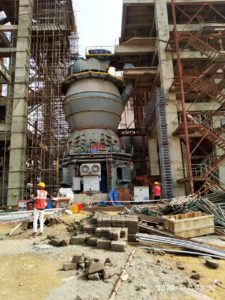
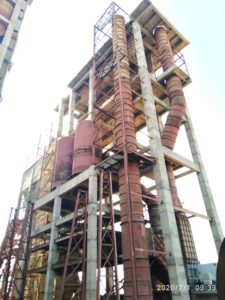
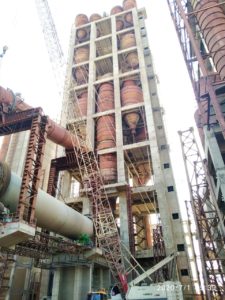
Stage 4 – Preheating The Composition
The raw mix is dried (the moisture content is decreased to less than 1%) at the cement manufacturing plant using preheaters. Heavy wheel-type rollers and rotating tables blend the raw mix, and the roller smashes it to a fine powder that is kept in silos and fed to the kiln.
Preheaters are used to heat the raw mix and remove carbon dioxide and water before it is introduced into the kiln. The raw meal is passed down the preheater tower while hot gases ascend up and heat the raw meal. A pre-heating chamber is made up of a series of cyclones that use the hot gases produced by the kiln to reduce energy usage and make the cement manufacturing process more environmentally friendly. The raw ingredients are processed here and converted into oxides that will be burned in the kiln. Raw meal decarbonates significantly at the kiln’s input point.
Stage 5 – Burning of composition in Kilns.
The decarbonated slurry is fed directly into a rotary kiln, which is an inclined steel cylinder. Clinker is created in the rotary kiln through a sequence of processes. The kiln is comprised of a steel casing lined with refractory bricks that must withstand the reactions that take place inside the kiln. Accordingly, the kiln is separated into three zones based on the process that takes place in each zone and the temperature in each zone. The kiln is heated from the bottom with coal, oil, or gases.
The stages are broadly divided into three as follows
- Drying zone
- Calcination Zone
- Burning zone or Clinkering Zone
Water and moisture from the decarbonated slurry are evaporated at 400°C in the first zone, which is known as the drying zone.
Stage 6 – Calcination Zone in Process of Cement Manufacturing
The temperature in the second phase, which is the calcination zone, is roughly 1000 degrees, and carbon dioxide is eliminated and immediately converted into flakes after losing moisture. The rotational movement of the kiln delivers these flakes or modules to the third stage.
The temperature in the third stage, known as the burning zone or clinkering zone, will be around 1300-1500 degrees. The lime and clay react in this zone to form calcium aluminates and calcium silicates. The modules are transformed into clinker, which is dark greenish balls, as soon as they enter the burning zone, where aluminates and calcium silicates fuse. The clinker size ranges from 5 mm to 20 mm. The following are the chemical reactions that are taking place in the kiln.
2CaO + SiO2 = Ca2SiO4 (declaim silicate (C2S))
3CaO + SiO2 = Ca3SiO5 (tricalcium silicate (C3S))
3CaO + Al2O3 = Ca3Al2O6 (dicalcium aluminate (C2A))
4CaO + Al2O3 + Fe2O3 = Ca4Al2Fe2O10 (tetracalcium aluminoferrite(C4AF))
Stage 7 – Clinker cooling with gypsum addition and grinding to a fine powder
After exiting the kiln, the clinker is rapidly cooled from 2000°C to 100°C-200°C by passing air over it.
The cooled clinkers are finely ground in ball mills. At this stage gypsum(2-4%) is added which functions to reduce the setting time of cement and gives the most important property of cement, compressive strength. It also prevents powder agglomeration and coating on the surface of the balls and mill walls. To prevent powder agglomeration, several organic compounds, such as Triethanolamine (0.1 wt.%), are added as grinding aids. Other additions that are occasionally utilised include ethylene glycol, oleic acid, and dodecyl-benzene sulphonate.
To save energy, the heat generated by the clinker is redirected to the kiln. The final grinding process is the final stage in the process of manufacturing cement.
The ground powder is conveyed to cement silos for storage. However, the particle distribution is done in a graded manner as well. The ground powder is transferred to the packing plant and packed for distribution.

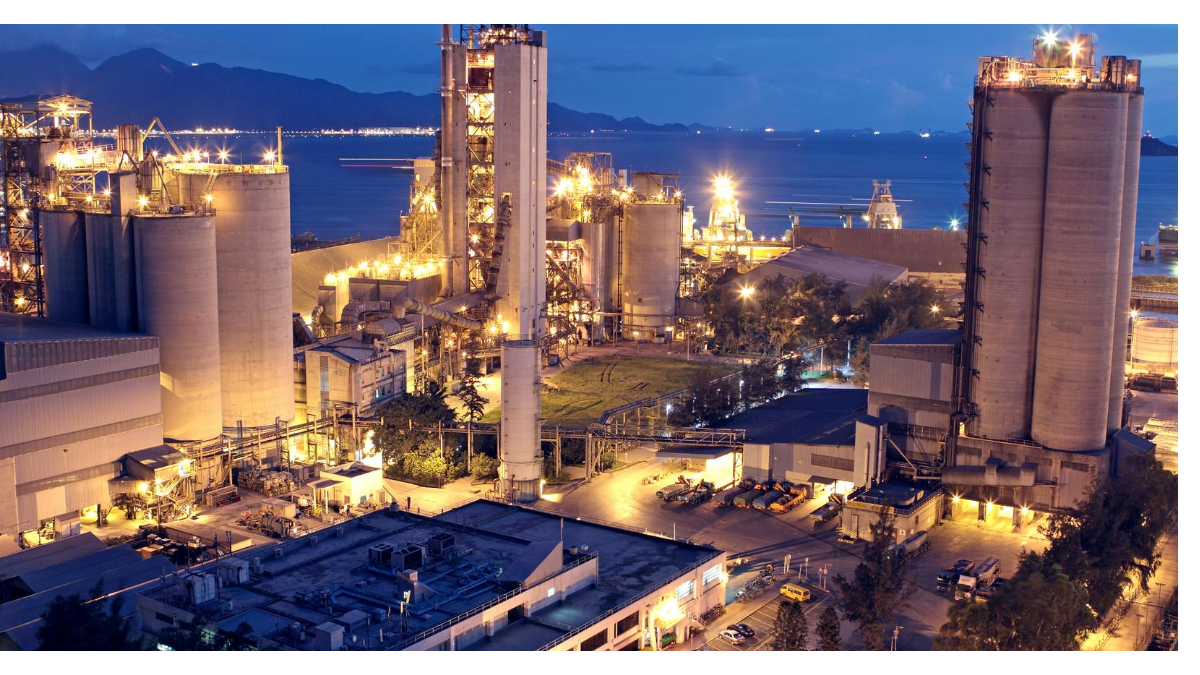
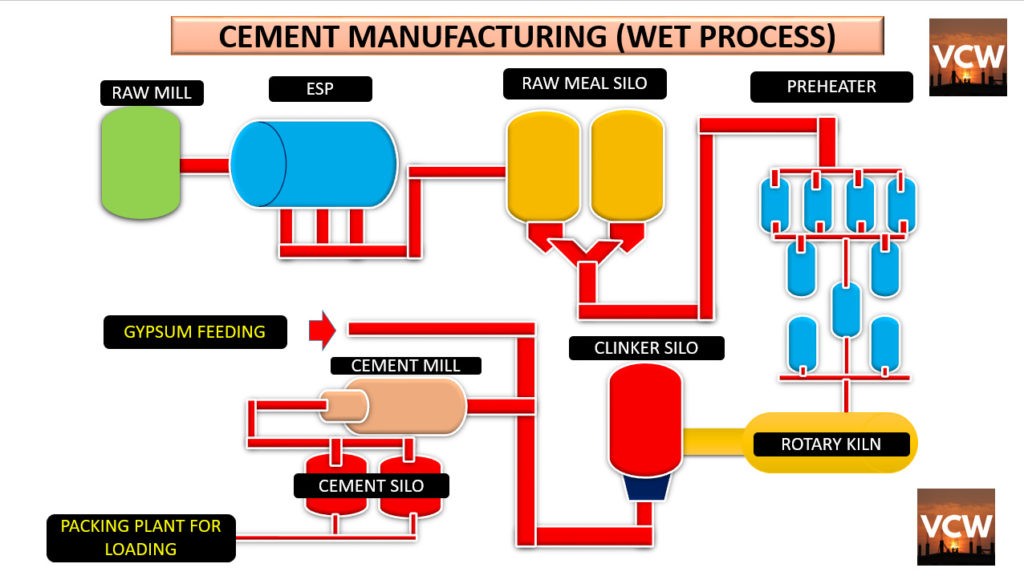
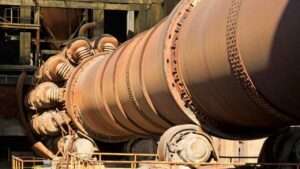
3 comments
Comments are closed.